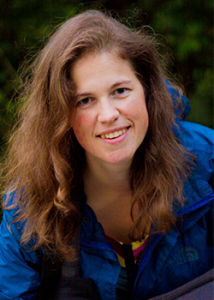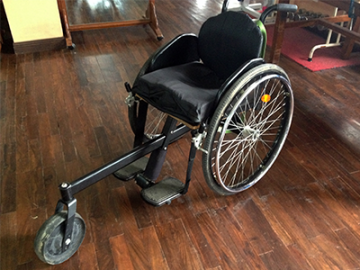UBC PhD student Emma Smith shares her experience of supporting the post-quake relief efforts in Nepal

Emma Smith
When a 7.8 magnitude earthquake hit central Nepal in the spring of 2015, killing thousands and injuring many more, UBC’s Emma Smith knew she had to take action.
As an occupational therapist by trade, now pursuing her PhD in Rehabilitation Sciences at UBC, Emma was eager to put her training and skills to work as part of the relief effort.
Last summer, when the opportunity arose to travel to Nepal as a member of the Wheelchair and Seating Team with Team Canada Healing Hands — a not-for-profit organization that provides rehabilitative education, training, and care to areas of need around the world — Emma jumped on board. By late August, she was on the ground, providing critical support and wheelchair training to those who had suffered severe spinal cord injuries during the quake.
We recently caught up with Emma to find out what her experience in Nepal was like, and how it has shaped her understanding of rehabilitation.
Why did you decide to get involved in the relief efforts in Nepal?
Like many people, I followed the news from the earthquake in Nepal, but was unsure of the best way to support the relief effort.
I knew there would be a huge volume of patients following the quake, and a real need for specific expertise for both service and training. Through my connections with Team Canada Healing Hands, an organization I have been involved with for several years as a member of the Wheelchair and Seating Team, I was asked to travel to Nepal and provide assistance and training with wheelchair provision at the Spinal Injury Rehabilitation Centre (SIRC) near Kathmandu. It was an incredible opportunity to use my own expertise to contribute to the post-quake relief effort.

A scene from the Spinal Injury Rehabilitation Centre, located in Saanga, approximately 24 km southeast of Kathmandu, Nepal. Photo credit: Emma Smith
What was the scene like on the ground?
I had never been to Nepal, so it was a new experience for me. We arrived four months after the earthquake so much of the major infrastructure that had sustained damage had been rebuilt or repaired. Unfortunately, many of those who lost their homes were still living in tent cities, with little protection from severe weather.
How prevalent were spinal cord injuries among survivors?
There were over 100 individuals who survived the earthquake, but sustained severe traumatic spinal cord injuries. These individuals were being treated at the Spinal Injury Rehabilitation Centre, which serves clients from every region of Nepal, and really serves as the hub of available services.
Typically the centre treats up to 55 patients at a time, all at different points in their recovery. But, while we were in Nepal, they were treating double the number of patients, the majority of whom were injured in the earthquake. For those injured in the quake, most did not have homes to return to.
Describe what a ‘typical’ day looked like for you working at the Spinal Injury Rehabilitation Centre.
Each day was quite different, but every day was spent making adjustments to wheelchairs, assessing patients for new wheelchairs, and customizing wheelchairs for the patients we had assessed.
Wheelchairs are a challenge —- both to acquire, but also to use! We were working with an organization called the Walkabout Foundation, who supplied 100 wheelchairs from their factory in India. These chairs, and others supplied by similar organizations, have been designed for use in less-resourced settings, and can be repaired using bicycle parts which can be found locally.

Photo credit: Emma Smith
Over the course of our week there, our team of three occupational therapists assessed over 80 patients. We also worked quite closely with the technician team at the centre, and provided some education to them on which adjustments were possible and necessary on the new chairs they receive. Throughout all of this, we were working with Nepali physical therapists with each patient, providing education as we worked through the process.
What did you take away from your time in Nepal?
I was incredibly impressed by what the rehabilitation centre was able to accomplish with so few resources. Coming from such a resource-rich country, I think it is easy to forget how privileged we are. The experience at Nepal’s Spinal Injury Rehabilitation Centre was humbling, and reminded me that with committed, dedicated patients and staff, it is possible to achieve rehabilitation goals which make a real difference in a patient’s life. It is an excellent reminder that we certainly do not have all the answers in Canada —- there is an opportunity to learn from one another.
Emma Smith is currently completing her PhD in Rehabilitation Sciences at UBC. Her thesis addresses the learning needs of older adults with cognitive impairments, and examines the tools (both technology and training approaches) needed for safe and effective powered mobility driving.